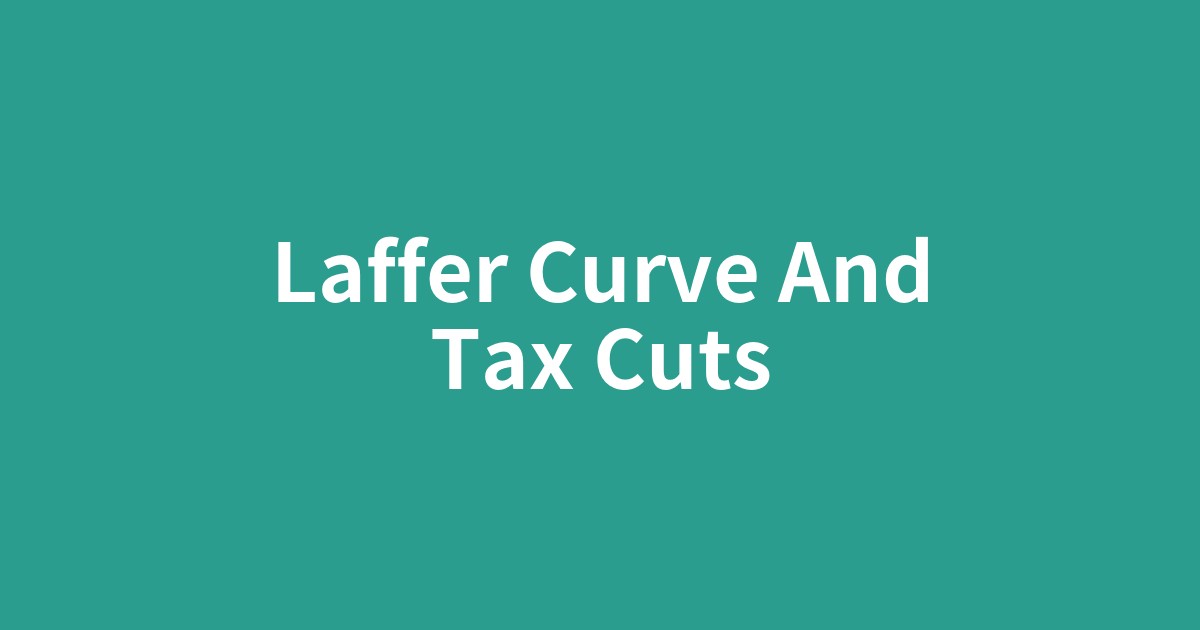このページは、歴史や文化の物語を楽しみながら、その文脈の中で重要な英単語を自然に学ぶための学習コンテンツです。各セクションの下にあるボタンで、いつでも日本語と英語を切り替えることができます。背景知識を日本語で学んだ後、英語の本文を読むことで、より深い理解と語彙力の向上を目指します。

税率を下げすぎても、上げすぎても税収は減ってしまう。減税が経済を活性化させ、結果的に税収を増やすという理論とそのvalidity(妥当性)。
この記事で抑えるべきポイント
- ✓ラッファー曲線とは、税率と税収の関係を示した理論であり、税率を上げすぎると労働意欲の低下などを招き、かえって税収が減少する可能性を示唆するものです。
- ✓この理論は、減税によって供給側(サプライサイド)を刺激し、経済成長を通じて税収増を目指す「サプライサイド経済学」の重要な論拠とされています。
- ✓ラッファー曲線は、1980年代の米レーガン政権下で「レーガノミクス」の理論的支柱となりましたが、その効果については現在も様々な議論があります。
- ✓理論上は明快ですが、税収を最大化する「最適税率」が具体的に何%かは不明であり、安易な減税は財政赤字を拡大させるリスクも伴うという批判的な視点も存在します。
税金は高いほど良い?逆説の経済理論
「税金は高ければ高いほど、国の収入は増えるはずだ」。多くの人がそう考えがちですが、もし「税率を下げた方が、かえって税収が増える」という考え方があったとしたらどう思いますか?この記事では、そんな逆説的な経済理論「ラッファー曲線」の世界を探求します。なぜ減税が経済を活性化させると考えられたのか、そしてその理論の妥当性(validity)を多角的に考察します。
Is a Higher Tax Rate Always Better? A Paradoxical Economic Theory
Many people tend to think, "The higher the taxes, the more revenue a country should collect." But what if there was a theory suggesting that lowering tax rates could actually increase tax revenue? In this article, we will explore the world of this paradoxical economic theory, the "Laffer Curve." We will delve into why tax cuts were thought to stimulate the economy and examine the validity of this theory from multiple perspectives.
ナプキンから生まれた経済理論「ラッファー曲線」とは?
この理論は、1974年、経済学者アーサー・ラッファーが、ワシントンのレストランで政府高官と会食中に、ナプキンに描いて説明したという逸話で有名です。「ラッファー曲線(Laffer Curve)」の考え方は非常にシンプルです。まず、税率(tax rate)が0%であれば、当然ながら税収(tax revenue)はゼロになります。逆に、税率が100%になれば、誰も働いたり稼いだりする意欲を失うため、これもまた税収はゼロになる、というものです。
What is the "Laffer Curve," an Economic Theory Born on a Napkin?
This theory is famous for an anecdote in which economist Arthur Laffer sketched it on a napkin during a dinner with government officials in Washington in 1974. The idea behind the Laffer Curve is very simple. First, if the tax rate is 0%, then naturally, tax revenue is zero. Conversely, if the tax rate becomes 100%, no one would have the motivation to work or earn, so tax revenue would also become zero.
サプライサイド経済学の登場と「レーガノミクス」
ラッファー曲線がなぜこれほど注目を集めたのでしょうか。それは、1970年代から80年代にかけて台頭した「サプライサイド経済学(supply-side economics)」の考え方と密接に結びついていたからです。それまでの経済政策が政府支出などで需要を喚起することに主眼を置いていたのに対し、サプライサイド経済学は、供給側、つまり企業や労働者の活力を高めることで経済成長を目指しました。
The Emergence of Supply-Side Economics and "Reaganomics"
Why did the Laffer Curve attract so much attention? It was closely linked to the ideas of supply-side economics, which rose to prominence from the 1970s to the 1980s. Whereas previous economic policies focused on stimulating demand through government spending, supply-side economics aimed to achieve economic growth by boosting the vitality of the supply side—that is, businesses and workers.
理論の妥当性(validity)と批判的な視点
減税で経済が活性化し、税収も増える──。ラッファー曲線が描く未来は非常に魅力的ですが、その理論の妥当性(validity)については、多くの批判(criticism)も存在します。最大の問題点は、「税収を最大化する最適税率が、具体的に何パーセントなのか誰にもわからない」ということです。もし、現在の税率がすでに曲線の頂点よりも左側(低い税率)にある場合、ここからの減税は単純に税収を減らし、深刻な財政赤字(fiscal deficit)を招くだけになってしまいます。
The Theory's Validity and Critical Perspectives
Tax cuts stimulate the economy and also increase tax revenue—the future depicted by the Laffer Curve is very appealing, but there is also much criticism regarding the theory's validity. The biggest problem is that "no one knows what the optimal tax rate that maximizes tax revenue actually is." If the current tax rate is already to the left of the curve's peak (a lower rate), then any further tax cuts would simply reduce tax revenue and lead to a serious fiscal deficit.
結論:経済を読み解く「教養のレンズ」として
ラッファー曲線は、税率と税収の関係を考える上で非常に示唆に富んだモデルですが、万能の処方箋ではありません。経済は、人々の心理や国際情勢など、多くの要因が複雑に絡み合うため、一つの理論で全てを説明するのは困難です。この記事を通じて、減税という政策が持つ可能性とリスクの両面を理解し、日々の経済ニュースをより深く読み解くための一つの「教養のレンズ」を手に入れていただけたなら幸いです。
Conclusion: As a "Lens of Erudition" to Decipher the Economy
The Laffer Curve is a highly suggestive model for thinking about the relationship between tax rates and revenue, but it is not a universal remedy. The economy is a complex web of many factors, including human psychology and international affairs, making it difficult to explain everything with a single theory. We hope that through this article, you have come to understand both the potential and the risks of tax cut policies, and have acquired a "lens of erudition" to more deeply interpret daily economic news.